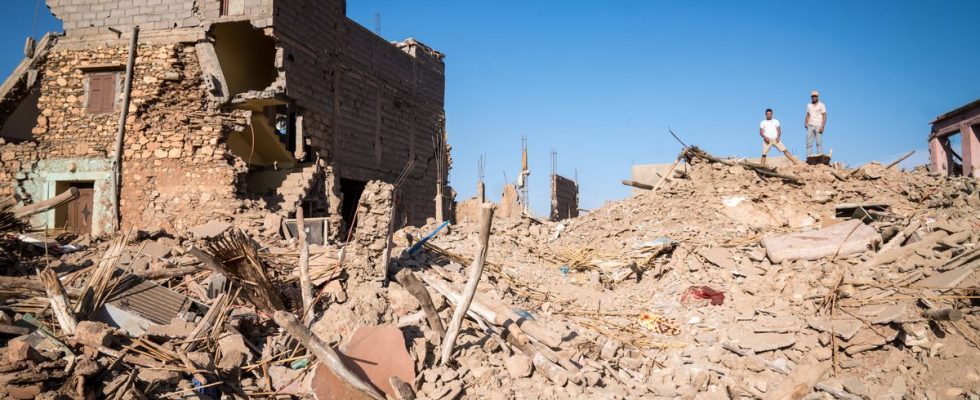Friday evening, a magnitude 7 earthquake, the strongest ever recorded in Morocco, devastated towns and villages southwest of Marrakech, leaving more than 2,900 dead and 5,530 injured according to a latest report. Many media outlets sent their journalists to the site to report on the scale of the disaster. This is the case of photographer Gabrielle Cézard for the Sipa Press agency.
One of his photos taken Monday in the village of Tafeghaghte, located on the heights of the town of Amizmiz at the foot of the High Atlas mountains, touched 20 minutes. She explains the making of it to us from Morocco, where she is still documenting this tragedy.
What do we see in the image?
Gabrielle Cézard sees “the scale of the catastrophe” in “this area close to the epicenter” of the earthquake. We see “clothes” on a pile of “rubble”. She tells us that there are about “ten meters” of debris “under her feet”. Before the earthquake, he must have had “around fifteen” houses in this location. She confides the difficulty of not thinking that there is potentially “someone” below, “three meters” away. To the remark on the two men in the background which allow us to establish a scale of size, she confirms that it would be “less impressive” without the two subjects in the photo. She adds: “They are ants compared to what is around us. »
What is the shooting context?
The journalist explains to us that this is “one of the last images” that she took of the day after returning from a report in the “douars”, small hamlets in the mountains, very difficult to access for the security services. relief. She went to the top of the village, following the advice of someone, only to find herself “in front of a kind of nothingness”. She tells us that it was “very hot” with a “smell of putrefaction”. In fact, she observes the corpses of donkeys and sheep around her. At the bottom, a small base camp has been set up with food aid, a dispensary and a few tents. Gabrielle Cézard gives us some figures: 118 houses were destroyed, at least 80 people lost their lives and 230 were injured.
The extra anecdote
Gabrielle Cézard tells us that “her batteries [d’appareil photo] are always charged” to be ready to go into the field at any time. As soon as she learned of the information about the earthquake, she contacted her agency Sipa Press to tell them that she wanted to go to Morocco. The photojournalist knows the city of Marrakech, as well as its region, well, and benefits from professional and friendly contacts on site to facilitate the preparation of the trip. She tells us that she left “in not even twenty-four hours”, without forgetting to put a pair of hiking shoes in her bag. When she is reminded that she is one of the rare female photographers there, she replies that the Moroccan people are “really very nice” and that she has “no problem working as a woman”. In this vast space, she has not encountered other photographers but admits to having “more male colleagues than females” even if this “tends to evolve”. If it is not easy for a small person weighing “52 kg” to “join together” in the pack of journalists during certain events, Gabrielle Cézard confides that being a woman can also prove to be “an asset” in the approach of a report, in order to have more discreet access to places. She also defends a different perspective, perhaps a little less “Cartesian”, without wanting to fall into the cliché of “the more sensitive woman”.

